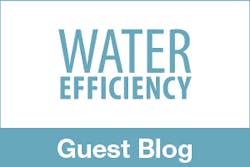The controversial definition of “Waters of the United States” (WOTUS), which establishes the reach of federal jurisdiction under the Clean Water Act (CWA), may be changing yet again. On December 10, 2018, the Environmental Protection Agency (EPA) and Army Corps of Engineers (COE) announced proposed regulations to describe which waters trigger federal permit requirements for activities that occur in, or discharge to, such waters. The COE issues permits for dredging and filling of WOTUS under CWA Section 404, while EPA (and states with delegated CWA authority) issue permits for discharging stormwater and wastewater to WOTUS under Section 402. As the CWA lacks a statutory definition, the scope of the term is left to the COE and EPA.
The Proposed Regulations are intended to replace 2015 regulations that were an effort to clarify 1986 regulations as modified by US Supreme Court decisions, primarily Justice Kennedy’s opinion in Rapanos v. US, which established a “significant nexus” test that many viewed as expanding the reach of federal jurisdiction. Following a 2017 Executive Order, the COE and EPA sought to repeal and replace the 2015 regulations with a significantly more limited definition of WOTUS as described in Justice Scalia’s opinion in Rapanos.
A clear WOTUS definition is critical to determine when permits are required and when enforcement can occur if permits are not obtained. Landowners and project proponents can face steep costs of hiring consultants and lawyers to evaluate and opine on the presence of jurisdictional waters or risk even more expensive defense costs, penalties, and environmental restoration costs if they err in determining WOTUS are not present. In their latest proposal, the COE and EPA promise to provide certainty to landowners with a “simpler and clearer” definition of WOTUS to help them understand whether a project on their property requires a federal permit without spending thousands of dollars on professionals. Agency proponents claim the new rule “clearly defines the difference between federally protected waterways and state protected waterways,” and provides a “clear and predictable approach” to regulating WOTUS.
There is little question that certain navigable waterbodies—lakes, rivers, bays, the ocean—are Waters of the US. There has been significant controversy, however, over the inclusion of certain other wet areas, such as isolated wetlands and ephemeral streams. Following Justice Scalia’s view, the COE and EPA propose a definition based on “relatively permanent flowing and standing waterbodies that are traditional navigable waters in their own right or that have a specific connection to traditional navigable waters, as well as wetlands abutting or having a direct hydrologic surface connection to those waters.”
The Proposed Regulation narrows several categories of waterbodies. Tributaries, for example, are included only if they have perennial or intermittent flow to traditionally navigable waters. Ephemeral tributaries, which flow only briefly during and immediately after rainfall, are now excluded.
Wetlands are included in the proposed WOTUS regulations, but only if they are “adjacent” to traditionally navigable waters. To be adjacent, wetlands must have a direct surface connection or abut (touch directly) those navigable waters. Wetlands previously included in WOTUS on the basis of a subsurface connection or a “significant nexus” are now excluded.
Only a subset of ditches remain jurisdictional: Those that function as traditionally navigable waters or that meet the proposed tributary definition if constructed in a tributary or an adjacent wetland.
In addition to retaining wet features excluded by prior regulations such as groundwater, prior converted cropland, and waste treatment systems, the Proposed Regulations codify several exclusions reflected in longstanding agency practice, such as certain ditches and artificial, constructed lakes and ponds.
The effect of the Proposed Regulations, if adopted, would be to significantly reduce the scope of federal jurisdiction, primarily in the arid west, where ephemeral, isolated, and other occasionally wet but disconnected landscape features are common across the landscape. Regulation of these features, which has historically been controversial under the CWA, will effectively be left to the states. While that will result in a patchwork of regulatory approaches, perhaps it will provide an opportunity for states to tailor regulation to their landscapes. Seeing that US Supreme Court decisions in 2001 and 2006 created a “gap” between state and federal jurisdiction, California has already focused considerable effort on developing a state definition for “wetlands,” along with procedures to regulate discharges of dredged or fill material to Waters of the State. While the state initiative has recently stalled, perhaps in anticipation of the Proposed Regulations, those relieved of federal permit requirements in California will likely be facing state permit requirements sometime in the future.
Once the Proposed Regulations are published in the Federal Register, the public will have 60 days to submit comments, and, based on the 2015 regulations, comments are likely to number in the hundreds of thousands, so it should be some time before a final could be adopted. We would also expect, just as occurred following the 2015 regulations, the final rule will be challenged by multiple lawsuits.Wendy L. Manley is a partner with law firm Wendel Rosen Black & Dean LLP in Oakland, CA. She may be reached at [email protected].

